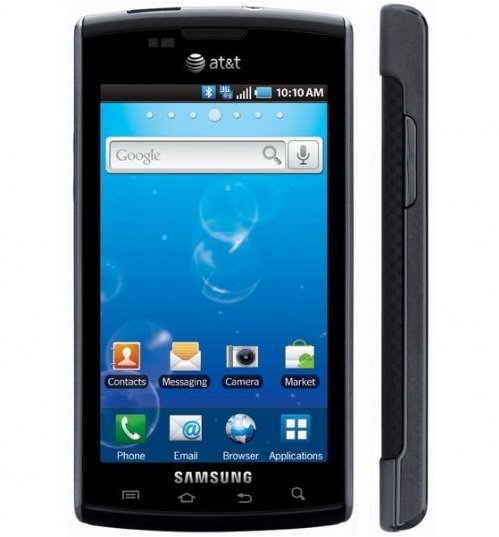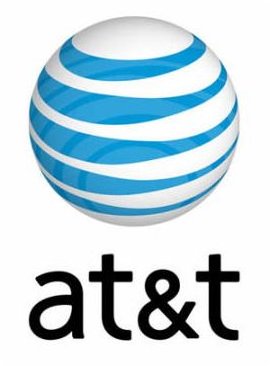Samsung Captivate Review - Delving into AT&Ts Exclusive Version of the Samsung Galaxy S

The Samsung Captivate is the rebranded Samsung Galaxy S, exclusively for AT&T. Nearly identical to its brother offered at T-Mobile, the Vibrant, the Captivate is a powerful Android phone with an amazing AMOLED screen and powerful processor. With a bit of change in style and using AT&T’s network, the Captivate is another great addition to Samsung’s little Galaxy S invasion of the United States.
Samsung Captivate Specifications
- Display: 4 inch Super AMOLED capacitive touchscreen display, 480 x 800 pixels, 16M colors
- Dimensions: 4.18 x 2.50 x 0.39 inches (106 x 64 x 10 mm)
- Weight: 4.50 oz (128 g)
- Memory: 16 GB storage, supports 32 GB MicroSD
- OS: Android OS 2.1
- Processor: 1 GHz Hummingbird Processor
- RAM: 512 MB
- Network: GSM Quad Band (850/900/1800/1900 MHz) and UMTS tri-band Global 3G (850/1900/2100 MHz)
- Connectivity: Bluetooth 3.0 with A2DP, microUSB 2.0, Wi-Fi 802.11 b/g/n with DLNA
- Camera: 5 MP camera, 2592 x 1944 pixels, autofocus, 720p video recording
- Radio: FM radio with RDS
- GPS: GPS transceiver with A-GPS
- Battery: 1500 mAh Li-Ion battery
Design and Display (4 out of 5)
The Samsung Captivate has a nice solid design and it seems like a merger between the iPhone 4 and its previous generation. Boxy overall design, but with a slight curve on the corners. Along the right edge is the power button which also acts as a lock button. On the other side, the left edge, there’s the volume controls. There’s a microUSB slot on top with a sliding cover, a fantastic idea. Next to the microUSB is the 3.5mm audio jack on the top. Behind is a 5 megapixel camera, and sadly, like the Vibrant, it does not have any type of flash.
The Captivate’s screen is a brilliant, responsive, 4 inch super AMOLED capacitive touchscreen display. The AMOLED technology allows the phone to be used in bright sunlight and provides great visibility at almost any angle. Underneath this fantastic display are 4 touch sensitive buttons that are backlit when active. They offer a nice bit of haptic response, when the option is enabled. The only downside is that, at times the backlight to the buttons will not activate immediately.
Sometimes you have to touch the screen twice to get the backlight going on those buttons.
On the AMOLED screen, the primary colors do stand out as primary colors, not dulled out, as some smartphones tend to be. Red looks red on the Samsung Captivate, unlike the maroonish color displayed for red on the iPhone 4. The technology behind the AMOLED screen also allows the color black to use very little battery power. Technically the screen is turned off in black space. White however comes off with a slight blue hue.
Hardware and Software (4 out of 5)

The Samsung Captivate comes loaded with Android 2.1 (Eclair) and will most likely be updated to 2.2 (Froyo) later in the year. The 1 GHz Hummingbird processor is an amazing addition to the phone, allowing it to seamlessly render videos, games and applications. Multiple applications barely register, as there’s little to no lag until you start opening several processor heavy applications. Overlaying Android 2.1 is Samsung’s proprietary TouchWiz UI 3.0. TouchWiz UI was Samsung’s attempt at offering a user friendly interface, starting way back with the Samsung Behold, then evolving into TouchWiz UI 2.0 with the Samsung Memoir. This third rendition of TouchWiz UI is fairly non-intrusive and offers 4 ‘go to’ options at the bottom of the screen.
The ‘applications’ screen from TouchWiz UI 3.0 gives the Samsung Captivate an iPhone like interface. The transition is smooth, and once again, due to the 1GHz Hummingbird processor, there is little to no lag when transitioning in and out of Samsung’s TouchWiz UI.
User Interface (5 out of 5)
The user interface for the Samsung Captivate is like all other Android devices, simple and smooth. Adding applications to the home screen? Simply hold the application you want and wait for a slight bit of haptic feedback, then move it around to where you want it with your finger. Want to delete the application from your screen? Simply hold it, wait for the bit of haptic feedback and drag it down to the trash bin at the bottom.
The TouchWiz UI 3.0 offered by Samsung also offers a new, yet very familiar view for applications on Android. Very similar to the iPhone’s application screen with the black background and the application icons on the front. When you want to get back to the familiar Android home screen, just hit the home button.
With the four TouchWiz UI options and four touch sensitive buttons across the bottom, it gives you easy access to 8 areas you want to immediately go to. Ranging from search, to your contacts, the 8 areas are all useful for when you want to quickly find and use or access something.
Features (4 out of 5)
The AT&T Samsung Captivate is packed full of features, ranging from the 5 megapixel camera that can also perform 720p video recording to the AT&T Music and Video. The 5 megapixel camera isn’t exactly the most stellar camera on a phone but it gets the job done. Though there is no LED or xenon flash on the phone, it does offer night mode. My attempts at trying to get a good shot at night however, were futile at best. The camera just was not good enough to get night shots. The recording ability is a nice touch and recording came out nice, during the day, but once again, when night fell upon me, so too did the camera’s abilities.
Beyond the preloaded applications, it also comes with the Android Market application, allowing you to download more applications from the market. One thing to note is that AT&T is the only carrier that has disabled their Samsung Galaxy S phone from installing third party applications. Meaning that you can only take what’s in the market, nothing more.
AT&T’s featured set of exclusive applications are your run of the mill applications, music and video, radio, and a navigator. Sadly, some of these applications are trials and to use them longer term, you must purchase them.
Connectivity and Call Quality (2 out of 5)
The Samsung Captivate uses AT&T’s network, which could be a good thing or a bad thing, determined by where you’re at.

One sad note is that while I was testing the phone, AT&T’s network was not as reliable as advertised. It may have been due to the fact that I tested the phone in a large, dense city, but I suffered from dropped calls, delayed messages both ingoing and outgoing and horrible call quality.
Though it may not seem fair to rate the Samsung Captivate based on AT&T’s network, it still needs to come into play. The Samsung Captivate is an AT&T exclusive phone and if you’re looking into purchasing the Samsung Captivate, you’ll also have to look into the network that supports it. The 3G was fast, but there were times where videos would not load completely or the network decided to switch over to 2G. There was apparently an outage to AT&T’s 3G network while testing the phone.
The call quality was not horrid from my end by any means, but the people receiving my calls heard me cut off or disappear into silence then come back to life. The Samsung Captivate, itself, had great call quality and the people I spoke with were crystal clear. That doesn’t however, forgive the fact that the people on the other side of the call had no idea what I was saying.
It’s a very sad thing to note, considering how powerful the Samsung Captivate is.
Differences From Samsung Galaxy S Phones
With Samsung reaching out to all four major U.S. carriers with the Samsung Galaxy S series of phones, one has to wonder, what are the big differences between the four different phones? How does AT&T’s Captivate differ from its other brethren, T-Mobile’s Vibrant, Verizon’s Fascinate and Sprint’s Epic 4G? Simply put, there aren’t that many differences.
AT&T may have made a bit of a mistake by not offering some sort of exclusive offering with the Captivate. T-Mobile attached a copy of Avatar and Sims 3, while Sprint is planning on putting a trial version of a game on the Epic 4G. The Samsung Captivate, on the other hand, offers only a design change.
The Samsung Captivate is more solidly built than the T-Mobile Vibrant and has less of a plastic-like feel to the phone. And while the Vibrant is very curved and looks very much like an older generation iPhone, the Captivate has a more boxy look. Only the corners are slightly curved, and it looks more of like an amalgam of the iPhone 4 and its predecessor.
Beyond these slight subtle differences in the way the phone is built, the Samsung Captivate is no different from the others. There is no front facing camera, there is no QWERTY keyboard and there are no exlusively released multimedia features.
The Verdict (4 out of 5)
AT&T’s Samsung Captivate is a great addition to the lineup. The phone itself is a powerful piece of hardware running on a reliable, stable, Android OS. AT&T has had a reliance on the likes of the Apple iPhone, but this seems to be their step forward into moving away from relying on one phone. The Samsung Captivate is an excellent phone but gets a reduced ranking, to ‘Good’ mainly due to AT&T’s extremely shoddy network. It’s sad to see a strong contender in the market be torn down due to the network it’s tied to.